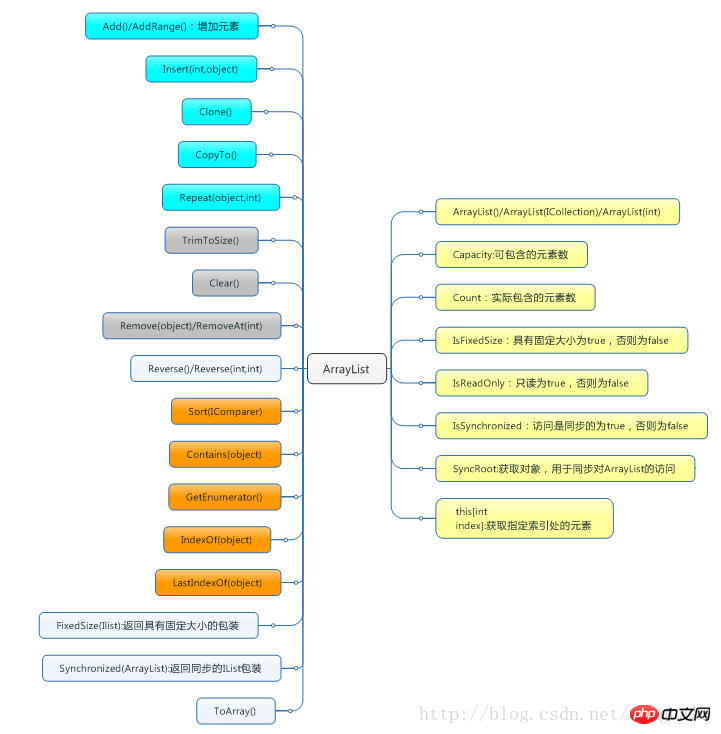 Backend Development
Backend Development
 C#.Net Tutorial
C#.Net Tutorial
 Detailed introduction to using C# to describe data structure 3: ArrayList graphic code
Detailed introduction to using C# to describe data structure 3: ArrayList graphic code
Detailed introduction to using C# to describe data structure 3: ArrayList graphic code
Mar 17, 2017 pm 05:19 PM When we introduced the Array data structure in the previous section, we mentioned that it is static. The number of elements in each dimension must be uniquely determined at compile time, and its type is strongly typed.
So, in this section, we will talk about another data structure that is similar to Array, but overcomes the shortcomings of Array: ArrayList.
First of all, it is not static. The number of elements in each dimension does not need to be specified during compilation. The system default number of elements is 16. When the number of elements increases and is about to exceed 16, it will double and expand to 32, and will grow regularly. , becomes smaller, the opposite process is performed.
Secondly, the element type is a weak type, object. At runtime, the type of each element is determined based on the actual type assigned. In other words, the elements in this set can be a mixture of different elements.
Let’s first look at the ArrayList interface provided by .NET: 
1) Object creation and initialization
1 2 3 4 5 |
|
2) Accessing elements
1 2 3 |
|
3) Modification Element
1 2 |
|
4) Delete element
1 2 3 4 5 |
|
5) ArrayList and other object relationships
1 2 3 4 |
|
Related articles:
js implements ArrayList function Attached example code
PHP method to implement C# copycat ArrayList
Java collection ArrayList sample code analysis
The above is the detailed content of Detailed introduction to using C# to describe data structure 3: ArrayList graphic code. For more information, please follow other related articles on the PHP Chinese website!

Hot Article

Hot tools Tags

Hot Article

Hot Article Tags

Notepad++7.3.1
Easy-to-use and free code editor

SublimeText3 Chinese version
Chinese version, very easy to use

Zend Studio 13.0.1
Powerful PHP integrated development environment

Dreamweaver CS6
Visual web development tools

SublimeText3 Mac version
God-level code editing software (SublimeText3)














